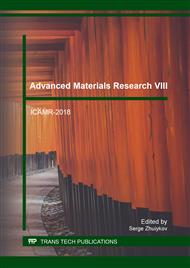p.227
p.232
p.237
p.243
p.249
p.255
p.260
p.269
p.275
Improvement of Bending Strength of Resin Coated Sand
Abstract:
This research proposed a method to improve bending strength of RCS used in hollow core production by finding the optimal levels of factors in the mixing process. Process factors under study were temperature of sand, time to release phenolic resin, time to release hexamine solution, time to start air blowing, air blowing time duration, and time to release calcium stearate. Experiments with Central Composite Face-centered (CCF) design were performed to save the number of experimental runs. Then, backward elimination regression analysis was performed to find out the relationship equation of bending strength and significant process factors. Next, the optimization technique was applied to determine the optimal setting of those significant process factors. The comfirmatory result showed that bending strength was significantly improved.
Info:
Periodical:
Pages:
249-254
Citation:
Online since:
March 2018
Authors:
Price:
Сopyright:
© 2018 Trans Tech Publications Ltd. All Rights Reserved
Share:
Citation:


